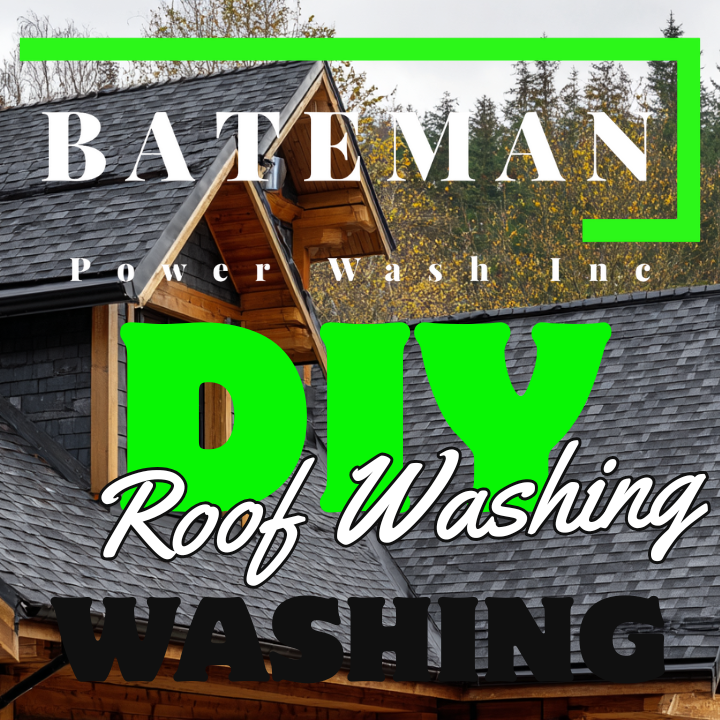Table of Contents
- Introduction: Why Roofs Need Regular Cleaning
- Essential Equipment & Tools Checklist
- Choosing the Right Detergent (And What to Avoid)
- Soft Wash Settings: PSI, GPM, Nozzles Explained
- Prepping the Work Area: Safety & Protection Measures
- Step-by-Step Process to Soft Wash a Roof
- Troubleshooting Common Roof Issues (Algae, Moss, Lichen)
- Post-Cleaning Treatments for Long-Lasting Results
- Advanced Tips: Speed, Technique, and Avoiding Damage
- Safety Protocols for Technicians
- Maintenance Schedule: How Often Should Roofs Be Washed?
- Client Education: What They Should Know Before & After the Service
1. Introduction: Why Roofs Need Regular Cleaning
Residential roofs are exposed to relentless environmental stress—algae, moss, lichen, dirt, UV rays, and air pollution. If neglected:
- Algae (black streaks) deteriorate shingle integrity.
- Moss and lichen trap moisture, leading to wood rot.
- Organic growth accelerates granule loss, reducing roof lifespan.
Professional soft-washing restores curb appeal and prevents long-term structural damage.
2. Essential Equipment & Tools Checklist
- Soft Wash System (12V Pump or Proportioner)
- Spray Nozzles:
- 40-degree (White Tip) — For delicate rinse
- Soap Nozzle (Black Tip) — For applying chemical mix
- Roof-Safe Sodium Hypochlorite (12.5%)
- Surfactant (roof cling soap)
- Garden Hose with Backflow Preventer
- Safety Gear: Safety glasses, gloves, non-slip boots
- Fall Protection: Harness, roof anchors, walking pads
- Plastic Sheeting & Painter’s Tape — To protect landscaping and fixtures
3. Choosing the Right Detergent (And What to Avoid)
Ideal Cleaners:
- Sodium Hypochlorite (3-5% applied mix) for algae/moss
- Surfactant to ensure cling and slow drying
Avoid:
- High-strength acid cleaners (damage shingles)
- Straight bleach applications (plant burn risk)
DIY Mix Example:
- 50% SH (12.5%) + 50% Water (for 6% base mix)
- Add 6-8 oz of surfactant per gallon of mix
4. Soft Wash Settings: PSI, GPM, Nozzles Explained
- PSI: Under 100 PSI (soft-wash systems only)
- GPM: 4-6 GPM preferred for larger coverage
- Nozzles:
- Soap Tip (Black): For applying chemical mix
- 40-degree Tip: For gentle rinsing (if needed)
5. Prepping the Work Area: Safety & Protection Measures
- Walk the property to inspect shingle condition.
- Ensure gutters are clean for runoff management.
- Pre-soak all landscaping with water.
- Cover delicate plants and fixtures with plastic sheeting.
- Secure ladders and fall protection.
- Inform occupants to keep windows/vents closed.
6. Step-by-Step Process to Soft Wash a Roof
Step 1: Pre-Rinse (Optional)
- Light mist on hot days to cool surface (optional).
Step 2: Apply Soft-Wash Mix
- Use soap nozzle to apply solution from bottom up.
- Soak problem areas (black streaks, moss patches).
- Allow 15-25 minutes dwell time, misting to keep wet.
Step 3: Rinse (If Required)
- Roofs typically self-clean with rain.
- For immediate results, rinse with garden hose (low pressure).
Step 4: Spot Treatment
- Reapply to stubborn moss/lichen.
- Do NOT scrub or pressure wash shingles directly.
7. Troubleshooting Common Roof Issues
| Problem | Solution |
|---|---|
| Black Streaks Persist | Increase SH concentration to 5% and reapply |
| Moss Not Releasing | Let weathering process naturally detach growth |
| Chemical Runoff on Plants | Pre/post rinse plants thoroughly |
| Streaks on Windows | Rinse windows after roof cleaning |
8. Post-Cleaning Treatments for Long-Lasting Results
- Apply a mold inhibitor for long-term algae control.
- Recommend zinc or copper strips for future growth prevention.
- Suggest gutter cleaning to prevent organic debris buildup.
9. Advanced Tips: Speed, Technique, and Avoiding Damage
- Use a proportioner for on-the-fly mix adjustments.
- Utilize long-range nozzles to stay off the roof when possible.
- Avoid windy days to minimize overspray.
- Work in the early morning or late afternoon to avoid rapid evaporation.
10. Safety Protocols for Technicians
- Always use fall protection when accessing roofs.
- Wear non-slip boots and safety glasses.
- Keep all hoses organized to avoid tripping hazards.
- Ensure no foot traffic or pets are near the work area.
- If walking on the roof, use walk boards or pads to distribute weight.
11. Maintenance Schedule: How Often Should Roofs Be Washed?
| Environment | Frequency |
| Humid/Algae-Prone Regions | Every 2-3 Years |
| Dry Climates | Every 5 Years |
| Heavily Shaded Roof Areas | Every 12-18 Months |
12. Client Education: What They Should Know
Before Service:
- Close all windows and attic vents.
- Move delicate plants, vehicles away from work area.
- Ensure water spigots are accessible.
After Service:
Provide aftercare instructions for spotting chemical runoff.
Inform clients that moss/lichen may take weeks to fully release.
Suggest post-service plant watering to neutralize overspray.
Discuss preventative maintenance options (annual inspections).

